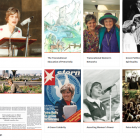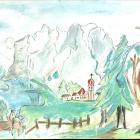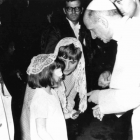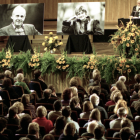4. A Green Celebrity: The Newspaper Coverage of Petra Kelly in the early 1980s
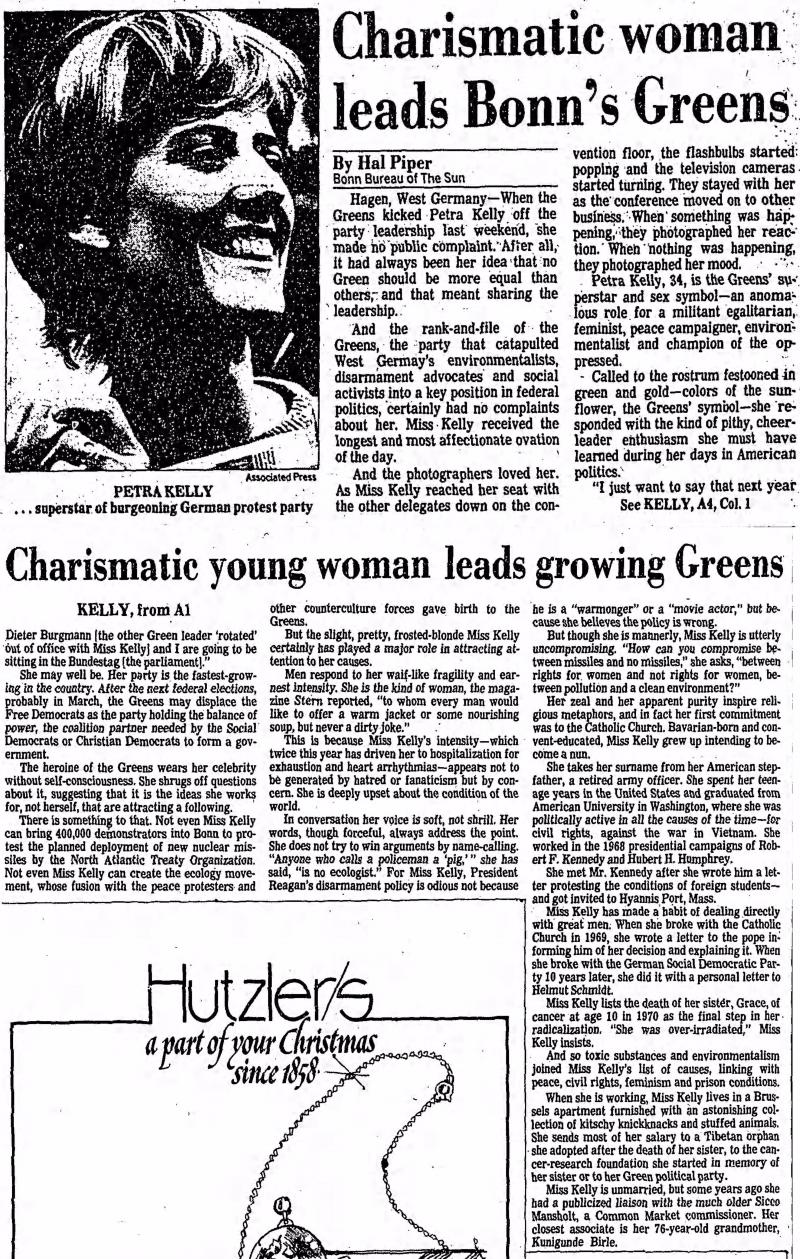
Figure 1. Article about Petra Kelly in The Baltimore Sun from 22 November 1982.
Figure 1. Article about Petra Kelly in The Baltimore Sun from 22 November 1982.
© The Baltimore Sun and The Associated Press (AP). Used by permission.
The copyright holder reserves, or holds for their own use, all the rights provided by copyright law, such as distribution, performance, and creation of derivative works.
On 22 November 1982, The Baltimore Sun, a popular US newspaper, ran an article titled “Charismatic Woman Leads Bonn’s Greens” that introduced the paper’s readers to Petra Kelly as the main driver of Die Grünen (see figure 1). Published in the wake of the party’s federal convention, which had taken place in the West German city of Hagen a week prior, the article asserted that Kelly was the “heroine of the Greens,” even though she had lost her position as one of the party’s three spokespersons during the event. The article’s author, Hal Piper of The Sun’s bureau in Bonn, argued that, while Kelly could not be credited with creating “the ecological movement” that “gave birth to the Greens,” it was she who was chiefly responsible for drawing attention to the environmental, social, economic, and political causes of the West German Green movement. According to Piper’s article, the reasons for Kelly’s ability to draw attention to herself and to Die Grünen could be found in the politician’s charisma, her attractive appearance and fascinating personality, as well as in her dedication and fervor. In addition to receiving the “longest and most affectionate ovation of the day,” the press loved her. No matter what else was going on, the journalist noted, Petra Kelly was at the center of the media’s attention: “When something was happening, they photographed her reactions. When nothing was happening, they photographed her mood.”
Piper’s article both addresses and exemplifies the broad attention that Petra Kelly received from the mainstream media at the time. In 1982–1983, when Die Grünen, which had only been founded a few years earlier, in January 1980, were competing in West Germany’s federal elections, Kelly “was at the height of her celebrity” and a constant presence in the national and international papers. As the political scientist Joachim Raschke has noted, even though the founding members of Die Grünen had vowed to do politics “without personalization and personality cult,” the press helped create and “permanently defined” a few green celebrities. Kelly was certainly the green celebrity. In comparison to other leading members of the federal party, she was the most recognized representative of Die Grünen, at least during the party’s early years. The media’s broad and by and large unprecedented coverage of her spanned not only Germany and Europe but also the Atlantic. Mainstream publications that introduced their readers to Kelly included local, regional, national, and international newspapers such as the Nürnberger Nachrichten, the Sueddeutsche Zeitung, De Standaard, the Daily Mirror, The Irish Times, the Brownsville Herald, The Baltimore Sun, and The New York Times, as well as magazines such as Cosmopolitan, L’Espresso, People, Lee, and Vanity Fair. In fact, even media outlets that did not publish pieces focused solely on Petra Kelly reported extensively on her. Especially in the foreign press, most reports about Die Grünen included one or two paragraphs covering Kelly.

Figure 2. Petra Kelly (center) with sunglasses during Chancellor Kohl’s government-policy statement in the Bundestag in Bonn on 4 May 1983.
Figure 2. Petra Kelly (center) with sunglasses during Chancellor Kohl’s government-policy statement in the Bundestag in Bonn on 4 May 1983.
Photo by Heinrich Sanden, 1983. © picture-alliance/ dpa | Heinrich Sanden. Used by permission.
The copyright holder reserves, or holds for their own use, all the rights provided by copyright law, such as distribution, performance, and creation of derivative works.
Much of the media’s fascination with Petra Kelly was undoubtedly tied to the highly visible pacifist, environmental, and antinuclear movements that spread through West Germany, Europe, and much of the world starting in the 1970s. In her rich and detailed biography of the politician, Saskia Richter emphasizes that Kelly was a “shooting star” who appeared on the parliamentary horizon of West Germany emerging from the social movements of the 1970s. Moreover, the founding of Die Grünen in 1980 and the party’s stunning rise during the subsequent three years were carefully observed by the national and international press. The Greens’ entrance into the West German Bundestag in March 1983—after garnering more than the required five percent of the electoral votes during the country’s federal election—turned into a media spectacle. For sure, the party attracted the press’s attention because of its political platform, which stood in sharp contrast to the foci of West Germany’s established parties. A product of the 1970s social and protest movements, Die Grünen’s political program emphasized ecology, social justice, and nonviolence as well as grassroots and direct democracy. Visually, however, it was the appearance of the Greens’ parliamentarians that filled the pages. Representatives of Die Grünen entered the parliamentary halls in Bonn singing peace songs and carrying flowers or fir branches, while wearing sneakers, jeans, and sweaters that, in some cases, were self-knitted. Their unorthodox appearance was a visual gift for photographers and reporters (see figure 2).
Petra Kelly stood out from the press reports that covered the rise and success of Die Grünen. Many journalists, who wrote lengthy pieces covering Kelly at the beginning of her career as a leading member of the federal Green Party, started their articles with “authentic” descriptions aimed at giving readers a sense of the “real” Petra Kelly. To do so, newspapers included descriptions of Petra Kelly’s transatlantic and pan-European upbringing and education. Writing in Le Nouvel Observateur, a leftist mass-circulation newsmagazine that was the go-to publication for French intellectuals in the 1960s and 1970s, Marie Muller explained that while Kelly was an “enfant des ruins” (child of the ruins), born in postwar Bavaria in November 1947, her family eventually crossed the Atlantic after “her journalist father left when she was four.” In a story for London’s The Sunday Times, Brian Moynihan and Keith Richardson reported that Kelly’s mother, after being divorced, remarried and moved with her new husband—a US army officer—and family to the United States. Lengthier pieces detailed Kelly’s journey from the classrooms of American University in Washington, DC, and the University of Amsterdam, to a position with the European Commission’s Economic and Social Committee. With this “funny international zig-zag destiny,” Marie Muller argued, Petra Kelly’s rise “as one of the stars of the Greens party” should have been fairly obvious.
Following the common format and goals of feature stories and portraits, some journalists also offered descriptions of Kelly’s behavior and personality. For example, on 18 November 1982, journalist Harry Trimborn reported in the International Herald Tribune that Petra Kelly—a “100-pound (45-kilogram) human whirlwind”—apologized to journalists for being 30 minutes late to a press meeting that was supposed to have started at 8:30. Kelly assured the journalists that she did not “oversleep.” Instead, she had been up since 6:00 in the morning and had completed two television interviews already. Trimborn and other reporters saw this as indicative of who Kelly really was. Because of her workload as a leading representative of Die Grünen, her dedication to the ecological, social, and political causes the party stood for, and because of her popularity, many reports noted, Kelly was constantly on the move, overworked, and thus utterly exhausted. Yet, despite several hospitalizations due to ill health, she would not stop or give up. Journalists frequently emphasized Kelly’s dedication to her work and also her physical condition. Especially because many US-based newspapers and magazines drew on press releases distributed by news agencies such as United Press International (UPI), many journalists described her with the same paradoxical combinations of terms. She was characterized as “frail” yet “fiery,” as “fragile” yet “strong,” or as “diminutive” yet “feisty.”

Figure 3. Portrait of Petra Kelly, taken by Ludwig Wegmann on 10 February 1983 in Bonn.
Figure 3. Portrait of Petra Kelly, taken by Ludwig Wegmann on 10 February 1983 in Bonn.
Photo by Ludwig Wegmann, 1983. © Federal Press Office, Germany. Used by permission.
The copyright holder reserves, or holds for their own use, all the rights provided by copyright law, such as distribution, performance, and creation of derivative works.
Though journalists like Moynihan and Richardson portrayed Kelly as a “fragile and pale creature” who was obstinate, unwavering, and “desperately overworked,” Kelly was, according to her biographer Saskia Richter, nonetheless described by some as an “attractive” and “amorous” young woman. Not surprisingly, stories and portraits focusing on Kelly and the Greens were quite often accompanied by headshots and close-ups of her that underlined the words journalists used to paint a picture of Kelly. In October 1983, the political journalist Ronald Steel concluded that the reason for Kelly’s allure could even be found in her sickly appearance. Despite unhealthy looks, Steel asserted in a Vanity Fair article, Kelly was still attractive because of her “short-cropped hair, her intense blue eyes, her sharp cheekbones and her sense of style.” Adding to her attractiveness were also her “nervousness,” her “incipiently anorectic” form, and her “wiry energy” that covered much of her “deep fatigue.”
Moving beyond the notion of Kelly being attractive and photogenic, some journalists, like Hal Piper, even stated that she was the Greens’ “sex symbol.” For instance, in May 1982, the cover of the West German magazine Stern featured a photograph of Petra Kelly in front of an enlarged depiction of a political button showing a peace dove and the slogan “End the arms race.” The headline read: “Petra Kelly: The green seduction” (see figure 4). Like many other newspapers and magazines at the time, Stern reported that Kelly, who was only 35 years old when she entered the Bundestag in 1983, had endeared herself to generations of young people who saw her as an inspiration and role model.
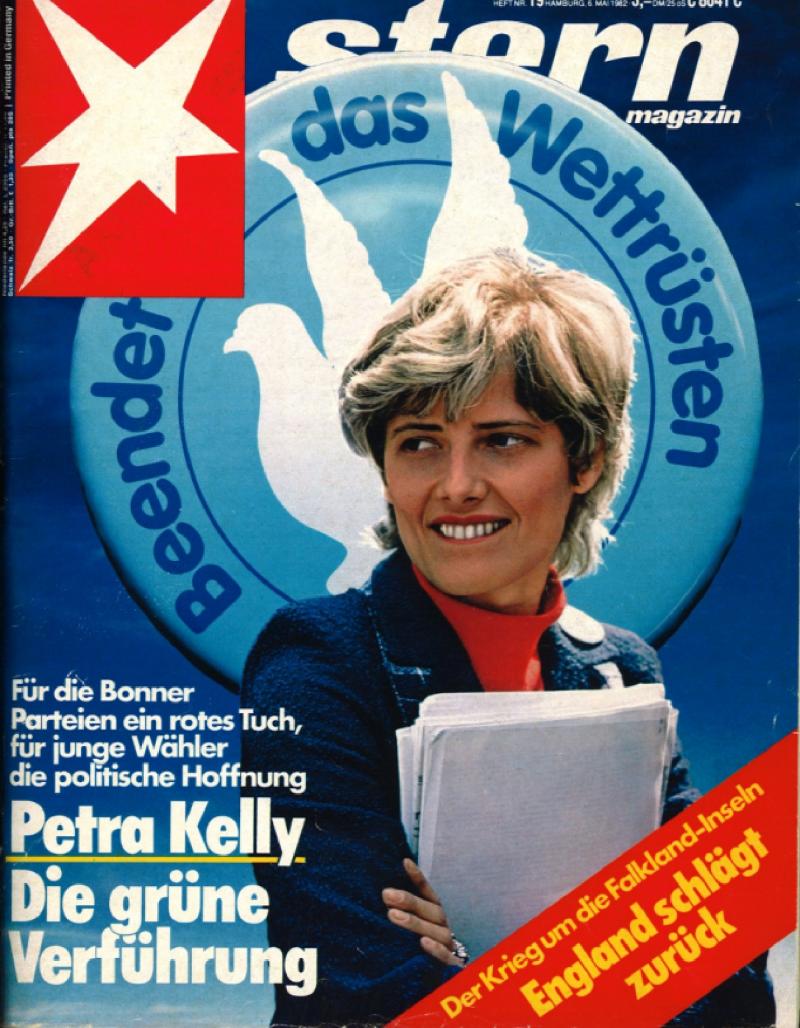
Figure 4. Cover of the magazine The Stern from 6 May 1982 with the title “Petra Kelly: The Green Seduction.”
Figure 4. Cover of the magazine The Stern from 6 May 1982 with the title “Petra Kelly: The Green Seduction.”
© Karin Rocholl, n.d. Used by permission. Courtesy of ddp media GmbH.
The copyright holder reserves, or holds for their own use, all the rights provided by copyright law, such as distribution, performance, and creation of derivative works.
The Stern’s suggestive portrayal of Kelly as “seductive” seems almost demure in comparison to some reports and imagery published in dubious tabloids and men’s magazines. In 1983, for example, the Munich-based magazine Superstars Intim, which focused on “erotic” and sexy stories of a wide array of stars, published an airbrush painting of Kelly. Placed in the magazine’s section “Star Gallery,” the Green parliamentarian was depicted lasciviously posing in a seated position entirely naked, only adorned by a few tropical flowers that were positioned between her straddled legs and knees. In these cases, depictions of Kelly came close to the objectification and commodification traditionally reserved for female movie, television, and music stars.
Prominently featured in newspapers, magazines, and tabloids, Kelly certainly became a political celebrity in the early 1980s. In fact, it can be argued that she experienced media coverage that was by and large unprecedented in the Cold War political history of West Germany. Reporters and photographers offered readers, who might have bought the papers to discover the authentic or real Petra Kelly, a well-curated, larger-than-life image of a green “superstar.” Newspapers created a complex and contradictory image of Petra Kelly that was of interest and accessible around the world. The image that the media created of Kelly in the early 1980s remains influential in today’s perceptions of her work and legacy. Although she continued to be a constant presence in the national and international media throughout the 1980s, the coverage does not compare to the years during which the West German Green Party burst onto the political scene in Bonn. Only in the wake of the murder-suicide that ended her life and the life of her long-term partner and colleague Gert Bastian in October 1992, did the media publish a comparative number of articles about Petra Kelly.



